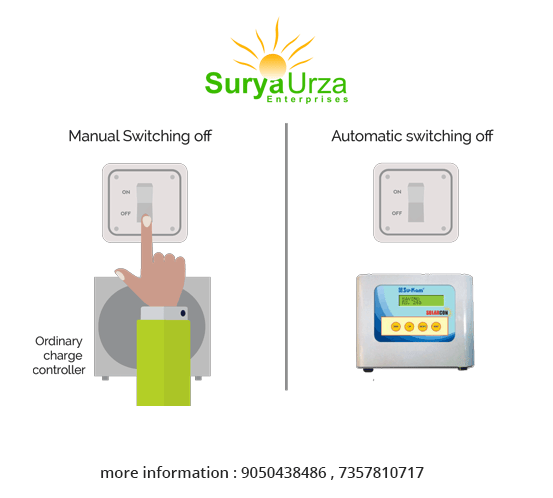New How is Solarcon Different From Solar Charge Controller
A charge controller with MPPT capability frees the system designer from closely matching available PV voltage to battery voltage. Considerable efficiency gains can be achieved, particularly when the PV array is located at some distance from the battery. By way of example, a 150 volt PV array connected to an MPPT charge controller can be used to charge a 24 or 48 volt battery. Higher array voltage means lower array current, so the savings in wiring costs can more than pay for the controller.
Charge controllers may also monitor battery temperature to prevent overheating. Some charge controller systems also display data, transmit data to remote displays, and data logging to track electric flow over time.work by pumping current through your battery in one direction. At night, the panels may pass a bit of current in the reverse direction, causing a slight discharge from the battery. (Our term “battery” represents either a single battery or bank of batteries.) The potential loss is minor, but it is easy to prevent. Some types of wind and hydro generators also draw reverse current when they stop (most do not except under fault conditions).
Solar Con
Solarcon hybrid solar charge controller convert’s the customer’s existing inverter/hups battery inverter into solar energy powered intelligent system. The system functions according to the user setting for the battery and main usage for running the load.
It can be connected with any existing HUPS/ inverter and convert it into a solar powered system. It controls the mains supply to the inverter so that when the battery is fully charged and still solar power is available to charge the battery, it automatically disconnects the mains from the inverter and the inverter starts working in a backup mode now the power is supplied from the battery and solar. This helps in utilizing the solar power generated optimally.




